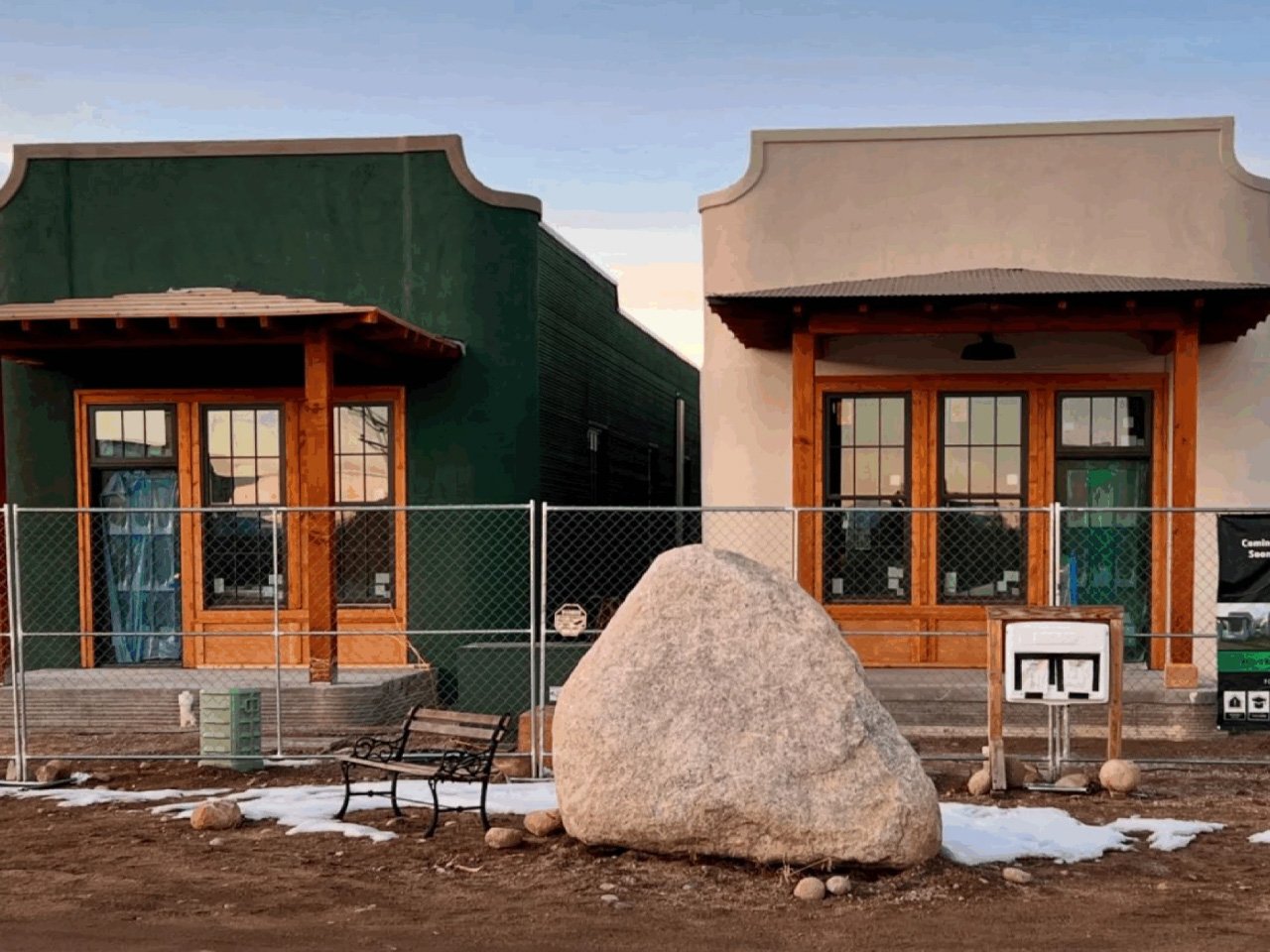Two concrete homes sitting side by side in Buena Vista, Colorado, look ordinary enough from the street. One has a green stucco finish, the other shows off layered concrete walls. But these twin houses, called VeroVistas, were built in a way that’s never been done before in the state—printed layer by layer using a massive 3D concrete printer. VeroTouch, the company behind the project, spent months figuring out how to make 3D printing work for real homes that real people would live in. One house even hides its printed origins completely behind stucco, proving this construction method can blend into any neighborhood.
The payoff came when they finished the second house in just 16 days of actual printing time. That’s from the concrete slab to the top of the house, according to automation engineer Ashley Fant, who gave tours during the homes’ February open house. The first home took approximately a year and a half due to research and development, while the second required only half that time. The COBOD BOD2 3D construction printer follows predefined paths with precision, significantly reducing manual labor while saving weeks of construction work compared to conventional building methods.
Designer: VeroTouch
The speed matters, but it’s not the main story here. These homes were designed specifically for Colorado’s wildfire problem. Nearly half the state’s residents live in areas where fires pose a real threat, and traditional wood-frame houses burn. The VeroVistas homes use A1-rated concrete walls that won’t catch fire or feed flames—the highest fire resistance rating you can get. The concrete walls do not fuel combustion at any stage, providing a stark contrast to conventional wood-framed construction that remains vulnerable to increasingly frequent wildfire threats across Colorado’s mountain regions.
Each 1,100-square-foot home comes loaded with premium features. Heated bathroom floors, quartz countertops, GE appliances throughout. At $625,000 each, they’re priced right in line with other homes in Colorado’s mountain communities, but they offer something those other houses can’t—genuine fire protection. The homes also feature energy-efficient design with mold resistance, making advanced construction technology accessible rather than positioning it as a luxury novelty.
VeroTouch partnered with South Main, a local developer, using local contractors for electrical, plumbing, and finishing work. This approach kept money and jobs in the community while introducing the new building method. The state took notice, giving VeroTouch $680,000 through its Innovative Housing Incentive Program, which aims to get 7,500 new homes built over three years. Governor Jared Polis called it exactly the kind of innovation Colorado needs to tackle its housing shortage, while state officials commended VeroTouch for helping increase housing supply.
The success in Buena Vista opened doors quickly. VeroTouch is already working on a 32-home development in nearby Salida, with the first house under construction. They’ve had to hire more people to keep up with demand. Grant Hamel, VeroTouch’s CEO, puts it simply: “We’re creating legacy homes that can be passed down, rather than torn down.” He thinks these houses will still be standing a century from now, long after wildfires have come and gone. For a state that’s watched entire communities burn in recent years, having fire-resistant homes that build faster and cost the same as conventional houses feels like a breakthrough worth paying attention to.
The post Colorado’s First 3D Printed Homes Mark Construction Breakthrough in Wildfire-Prone Region first appeared on Yanko Design.

